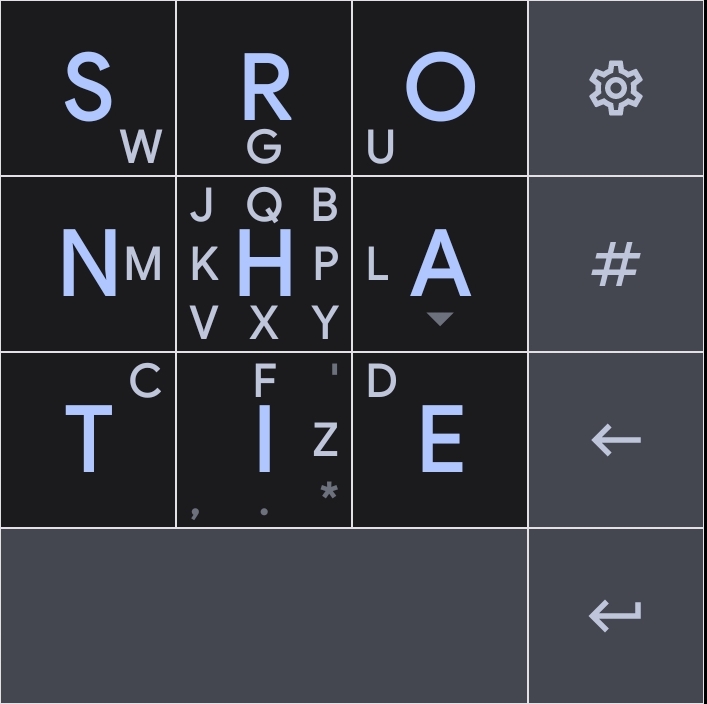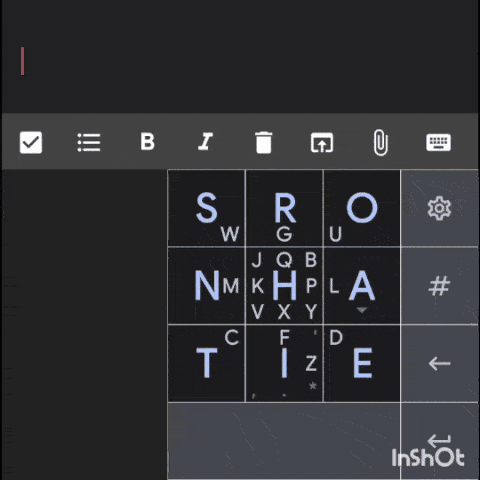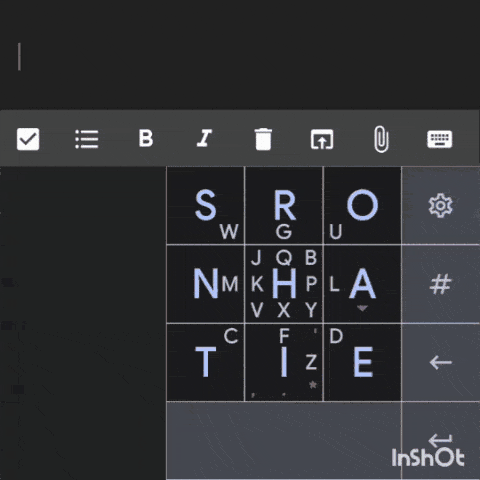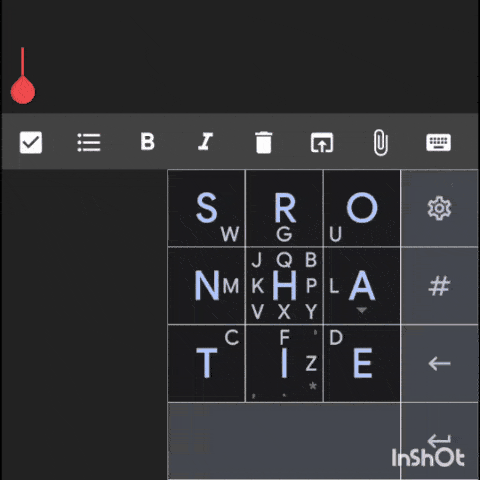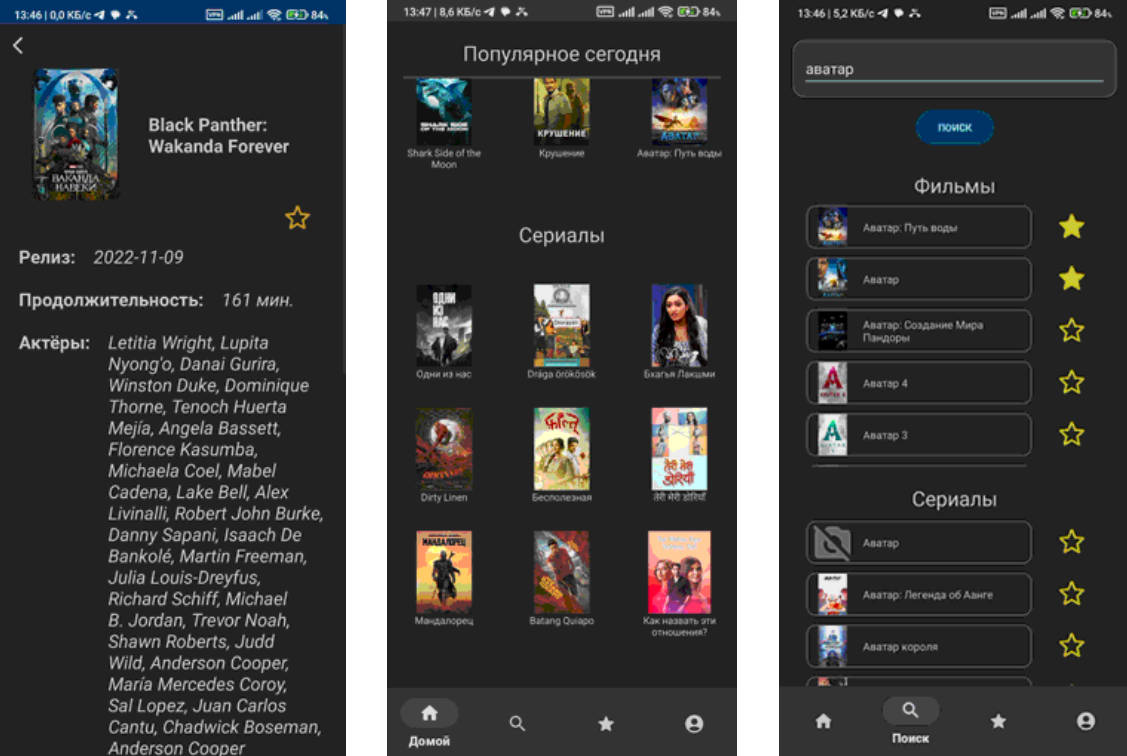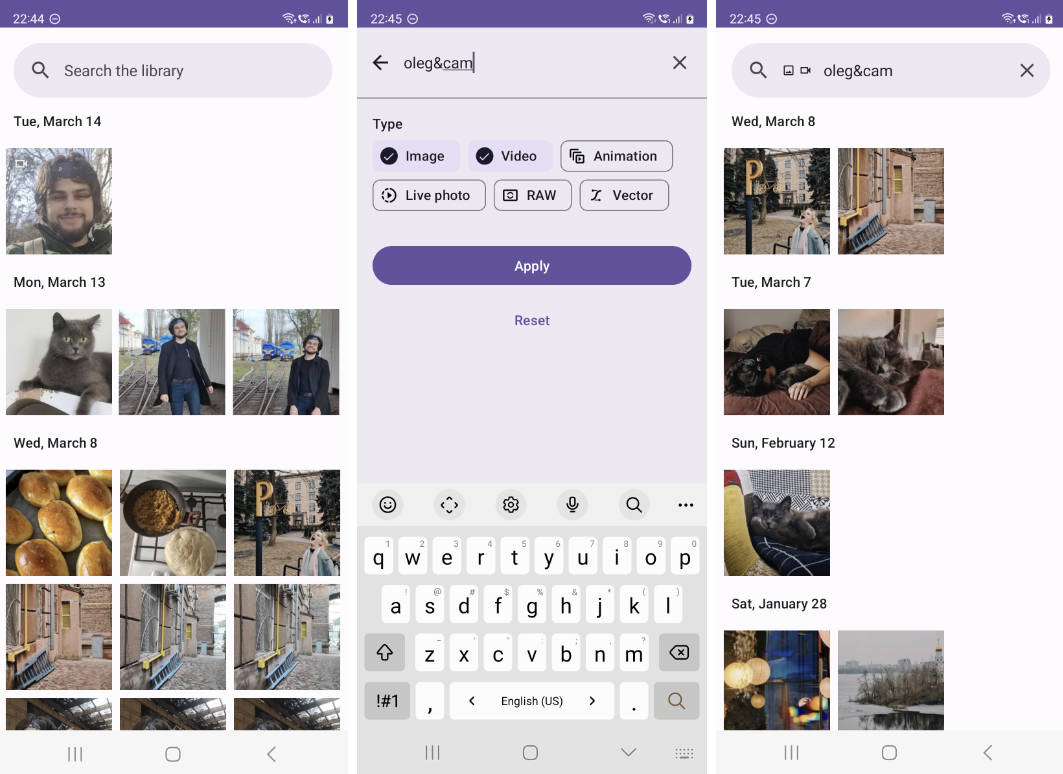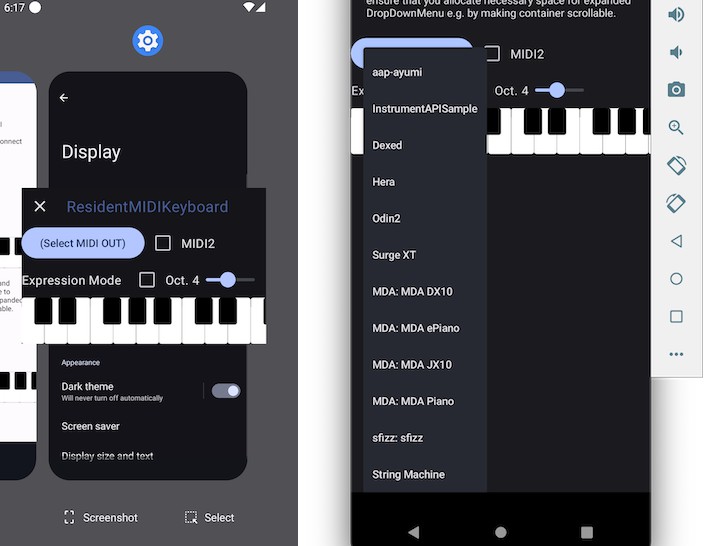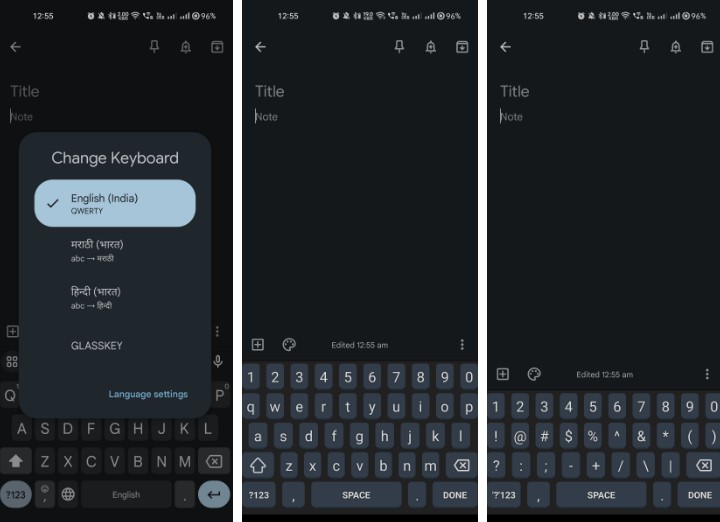Thumb-Key
A privacy-conscious keyboard made for your thumbs
Report Bug · Request Feature · Releases
About Thumb-Key
Thumb-Key is a privacy-conscious smart keyboard, made specifically for your thumbs.
It features a 3×3 grid layout, as many older phones had, and uses swipes for the less common letters. Initial testing shows that you can reach ~25 words per minute after a day of use.
Instead of relying on profit-driven, privacy-offending word and sentence prediction for accuracy, as do most popular phone keyboards like Gboard and Swiftkey, Thumb-Key uses large keys with predictable positions, to prevent your eyes from hunting and pecking for letters.
As the key positions get ingrained into your muscle memory, eventually you’ll be able to appromixate the fast speeds of touch-typing, your eyes never having to leave the text edit area.
This project is a follow-up to the now unmaintained (and closed-source) MessageEase Keyboard, which is its main inspiration.
User Guide
Tap a key, or slide to type a letter.
Double tap the space bar to type a period.
Slide left on the backspace key to delete whole words.
Other hints
- Press the
#key to see a numeric keypad, and additional symbols. - Press the Settings Gear key to configure Thumb-Key.
- Practice typing, and check your words per minute, using monkeytype.com
Thumb-Key Design
A History of Phone Keyboards
Physical keyboards, with the full-size QWERTY layout, were not designed for use on small devices like phones; they were designed specifically for 10 fingers resting on a keybed, sitting on a secure surface.
Phones must be held with the fore-fingers and palm, or held with one hand and typed with the other, leaving only 1 or 2 thumbs (as opposed to 10 fingers) free to perform key-presses. As texting came into being, word prediction came to be seen as the best solution to slow input speeds.
On phones that used the 9-key numeric layout, T9 predictive text was used. Other phones used the full-hand layout with the familiar QWERTY layout, with other proprietary predictive methods.
When phone keyboards became Keyloggers
As phones moved from physical buttons to soft-keyboards, key sizes became smaller and taps more imprecise and error-prone, with better predictive technology picking up the slack.
Smartphone companies like Apple and Google, in an attempt to better their word prediction algorithms, as well as collect potentially profitable information on what their users were typing, began submitting and aggregating all their user’s key-taps to their servers, violating user’s privacy in the process. Known as Keyloggers, and seen as universally malicious programs on desktop computers, these apps unfortunately became normalized and seen as a necessity on phones.
The lack of innovation on phone keyboard design, is best explained by the potential profitability these companies stand to gain by collecting and aggregating everything a user types; including the commodification of this data directly, or information and trends about you learned from this data, that they can sell to advertisers and 3rd parties. These could include your buying preferences, preferred websites, what you most commonly talk about with friends, and everything you type into search bars and text boxes.
As of today, phone keyboards are in such an abysmal state of privacy, that there aren’t many keyboards left that can guarantee not to be logging all of your keystrokes.
MessageEase
As a testament to the stunning lack of innovation on both desktop and phone keyboards, the QWERTY layout from the 1880s is still the dominant layout, even on smartphones in the 21st century.
One company named Exideas created a keyboard app called MessageEase, which relied on the original large 9-key grid of old phones, and managed to acheive comparable fast typing speeds to other keyboards, without relying on big-data-powered word-prediction.
Much research went into MessageEase’s design, and many of its users can do > 50 words per minute.
MessageEase is unfortunately unmaintained, and Thumb-Key uses a better alternating-thumb layout letter position (although the original MessageEase Keyboard layout is available in the settings).
Thumb-Key Letter Positions
- Large keys are in a predictable 9-key grid. Eventually, you should be able to keep your eyes on the text input area, rather than hunting-and-pecking for letters, approximating touch-typing.
- Letter positions are based on English text letter frequency. The most common letters are: ETAOINSHR. These 9 letters alone make up ~70% of all English text.
- First 9 letters by frequency are the 9 center key taps. The next 8 are swipes to the center. The next 8 are off the center hub key. Z is last.
- Alternate fingers for vowels and consonants (Vowels on right side of keyboard, consonants on left). This naturally results in fast digram speeds.
- Prioritize bottom, and right side of keyboard. So EAO should be on the right side, and bottom to top, while TNS is on the left side.
Built With
Features
- Highly configurable.
- Customizeable sizing, ThumbKey and MessageEase layouts, dynamic / Material v3 themes, animations, haptic feedback, and audio feedback.
- Open source, AGPL License.
Installation / Releases
Support / Donate
Thumb-Key will always remain free, open-source software. We’ve seen many keyboards (and open-source projects in general) go unmaintained after a few years. Recurring donations have proven to be the only way these projects can stay alive.
Your donations directly support full-time development, and help keep this maintained. If you find yourself using Thumb-Key every day, consider donating:
Crypto
- bitcoin:
1Hefs7miXS5ff5Ck5xvmjKjXf5242KzRtK - ethereum:
0x400c96c96acbC6E7B3B43B1dc1BB446540a88A01 - monero:
41taVyY6e1xApqKyMVDRVxJ76sPkfZhALLTjRvVKpaAh2pBd4wv9RgYj1tSPrx8wc6iE1uWUfjtQdTmTy2FGMeChGVKPQuV - cardano:
addr1q858t89l2ym6xmrugjs0af9cslfwvnvsh2xxp6x4dcez7pf5tushkp4wl7zxfhm2djp6gq60dk4cmc7seaza5p3slx0sakjutm
Contact
Android IME Resources
- https://github.com/THEAccess/compose-keyboard-ime
- https://stackoverflow.com/questions/65570024/build-software-keyboard-with-jetpack-compose-ime-input-method-with-jetpack-com
- https://developer.android.com/develop/ui/views/touch-and-input/creating-input-method





